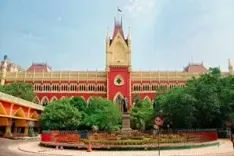Are Jharkhand's Coal Mines Under Siege from Fires and Floods?

Synopsis
Key Takeaways
- Monsoon rains have worsened conditions in Jharkhand's coal mining areas.
- Underground fires are causing significant health and environmental hazards.
- Residents live in fear of land subsidence and toxic emissions.
- Urgent government intervention and long-term solutions are needed.
- Many families lack safe relocation options despite the dangers.
Ranchi, June 20 (NationPress) The relentless monsoon rains have exacerbated the already dire conditions in Jharkhand’s coal mining regions, compounding the fears of land subsidence as underground fires rage on, creating panic due to escalating gas and smoke emissions.
Areas across Dhanbad, Ranchi, Ramgarh, and Bokaro districts are experiencing intensified underground fires, with thick smoke and hazardous gases seeping from fissures in the earth.
Among the most severely impacted sites are Jharia, Baghmara, Katras, and Sijua in Dhanbad; the Karakatta mine in the Khalari coalfield of Ranchi; Bhuchungdih village in Ramgarh's Rajrappa coal area; and the Dhori region in Bokaro district.
In the Jharia region, particularly in BCCL (Bharat Coking Coal Ltd) Area Nine and the Kanakani Colliery in Sijua, thick smoke is rising from ground cracks. Residents live in fear of land subsidence—a recurring and life-threatening risk in these coal mining areas.
Additionally, the monsoon downpours have complicated the scenario by flooding both opencast and underground mines across all 12 BCCL operational zones in Jharkhand.
This situation has resulted in the cessation of coal production, and the entry of workers into underground mines has been strictly limited. In many cases, heavy mining machinery has been submerged, leading to significant operational and economic setbacks.
Despite a high alert issued by the BCCL administration anticipating the risks, the mines became inundated due to inadequate drainage systems.
The flooding has caused incidents of gas leaks and land sinking in residential areas near Baghmara, Katras, and adjacent regions.
Reports of structural damage are surfacing, with cracks appearing in numerous homes. Many families continue to live in these perilous areas despite being labeled unsafe years ago, due to a lack of relocation or compensation alternatives.
The situation is dire in the Karakatta area of Ranchi's Khalari coalfield, where smoke and gas are emanating from over 15 locations. Water entering the abandoned mine through ground fissures has generated smoke, making the air nearly unbreathable for local residents.
In Rajrappa's Bhuchungdih village, an illegal mine fire poses a serious threat of escalating out of control. This area had already witnessed a tragic accident last month, when laborer Ravindra Mahato lost his life after falling into a cavity caused by subsidence.
Efforts by Central Coalfields Limited (CCL) and local authorities to manage the fire are ongoing.
Recently, a fire erupted in the Dhori Khas underground mine (seams 4 and 5) under CCL’s Dhori Area, where management has struggled for several days to contain the blaze.
As the crisis deepens, residents are calling for immediate intervention, relocation, and sustainable solutions to address the environmental and health hazards posed by coal fires, particularly during the monsoon season.






